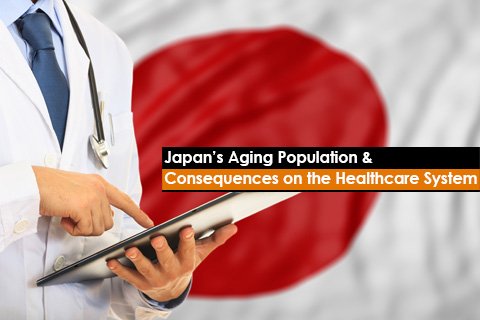In the early years of the next century, the Japanese population is expected to become the oldest in the world. The Japanese government's concentration on post-World War II economic expansion meant that the government fully woke up to the financial implications of having a large elderly population when the oil prices skyrocketed in the 70s, highlighting Japan's economic dependency on global markets.
The measures of healthcare cost containment that the government introduced in response to the increased finances, with a particular focus on pharmaceuticals, brought some major and significant changes in Japan’s pharmaceutical industry.
But the question now is to understand, what are the consequences of Japan’s aging population on the Healthcare system. Discussed below are a few:
- Increased Health Spending - Research implies that the population aging in Japan will result in an increase in health expenditures as a share of GDP by 2.59% points between 2020 and 2060. This gradual change suggests that population aging is likely to contribute majorly to the annual health spending growth in Japan in the coming decades.
- Improved Health Interventions - The introduction of universal health insurance, good sanitation and hygiene, effective public health interventions (e.g., salt awareness campaigns), healthy diets, and improved access to treatments (e.g., antihypertensive medication) in Japan substantially helped the population to increase expectancy at birth.
However, mortality and death from age-related illnesses, including Alzheimer’s and dementia. Hence, preventative measures, medicines, and medical devices to counter this death rate are essential for Japan’s healthcare infrastructure.
- Changes in Needs Due to Population Mix - Changes in people’s needs due to population age-mix shifts have consequences for health and long-term care systems. Data from most countries show that, on average, older people have higher health expenditures than younger people.
This often leads to the assumption that health expenditure growth will accelerate as older people make up an increasing share of the population, potentially challenging the sustainability of health systems.
Yet, while providing appropriate health and social care to an increasing number of older persons does place additional pressure on the health system, aging is not the main driver of expenditure growth.
Many argue instead that factors such as organization of care, technology, price regulation, proximity to death, and health status are more important drivers of healthcare spending.
So, it’s safe to say that the Japanese government has achieved success in terms of containing pharmaceutical costs, but the future effects on the quality of healthcare are uncertain. Ultimately, a wider application of a per diem fee in place of the prevalent fee-for-service system, and the realization of plans to improve the social service infrastructure, would be the best path for policy to follow.
Freyr Solutions will help you with end-to-end Regulatory strategy in Japan with the presence of our ground team of seasoned and experienced experts.
Contact Freyr for more information.





